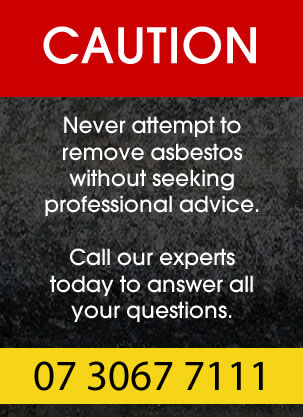About Asbestos
Learn About The History, Types & Dangers Of Asbestos
The History Of Asbestos In Australia
The use of asbestos in Australia began as early as 1930 with the establishment of an asbestos mine in the town of Wittenoom located in the western part of the country. Since then, the use of asbestos in construction and industry grew exponentially reaching its peak in the period between 1950 and 1980. During this peak, expert reports indicated that Australia had the highest use of asbestos per capita in the world with textile mills, construction companies and other repair and production facilities using the material.
Why Asbestos Gained Popularity
Asbestos gained popularity and wide use due to the following reasons:
- It is naturally resistant to fire making it ideal for thermal insulation, roofing and flooring. Using asbestos in construction would thus increase your house’s resistance to fire;
- When mixed with cement, it increases its strength and longevity making products constructed with the mixture far superior to competing products such as plastic and wood: roof shingles made of the mixture had a lifespan of about 60 years;
- It is inexpensive. Asbestos is naturally occurring making it a cheap component compared to other cement additives.
Types of asbestos
There exists six different types of asbestos split into two groups:
1. Serpentine – This kind has a layered structure with curly fibres. This group only contains one type of asbestos; Chrysotile asbestos — the kind mostly used in the U.S.A.
2. Amphibole – This kind is characterised by long chain-like structures of fibre that are sharp, straight and easily inhaled. This group comprises of the other five types of asbestos namely: amosite, anthophyllite, crocidolite, actinolite and tremolite.
The latter types of asbestos are mostly categorised by their colours, although anthophyllite, actinolite and tremolite remain unclassified.
- Brown – amosite
- White – chrysotile
- Blue – crocidolite
Crocidolite, one of the more toxic types of asbestos, was the type mined in the town of Witternoom while Woodsreef mine in New south Wales produced chrysotile (white) asbestos.
Dangers Of Asbestos
Studies of people exposed to asbestos in factories, mines, homes and shipyards indicated that inhaling large amounts of asbestos could result in an increased risk of contracting lung cancer. The two common types of lung cancer associated with asbestos inhalation are:
- Mesothelioma, a cancer that affects the abdominal cavity and the chest lining; and
- Asbestosis, scarring of the lungs with fibrous tissue.
This risk will increase in proportion to the number of fibres inhaled. Smoking will further increase these chances. Symptoms may however not manifest for a period of about 20 – 30 years after initial exposure.
After realising the health risks associated with asbestos, the Australian government started regulating the use of this material. The government banned the use of blue (crocidolite) asbestos in 1967 and brown (amosite) asbestos in the mid 1980s. In 2003 the government banned the use of white (chrysotile) asbestos and all other types of asbestos that had survived previous bans.
How To Remove Asbestos
If your house underwent its last renovation before the 1990s, it is highly recommended that you have it checked for unsafe asbestos. It is however no reason to panic if you suspect that there might be asbestos present in your home. The best thing to do is leave the undamaged asbestos material alone.
It is unlikely that undamaged material containing asbestos would be of any threat to you. It is therefore important to keep checking on any materials you might suspect to contain asbestos for damage and signs of ware, water damage or abrasions. DO NOT TOUCH THIS MATERIAL. If damage is noted, limit access to these areas and seek professional help.
Getting the help of a professional will help you determine without doubt the items in your house that are made of asbestos and their current state of damage by conducting visual inspections and taking samples for further analysis in a lab. Be sure to contract a government certified professional and follow up on the disposal of any asbestos materials removed from your house to make sure it is done correctly. This is important because poor handling of asbestos creates more problems instead of solving them.
Asbestos is one of the most dangerous carcinogens known to man.
Protect yourself and your family by getting your premises checked out by a professional.
To find out more information or ask for free advice please contact our team today.

